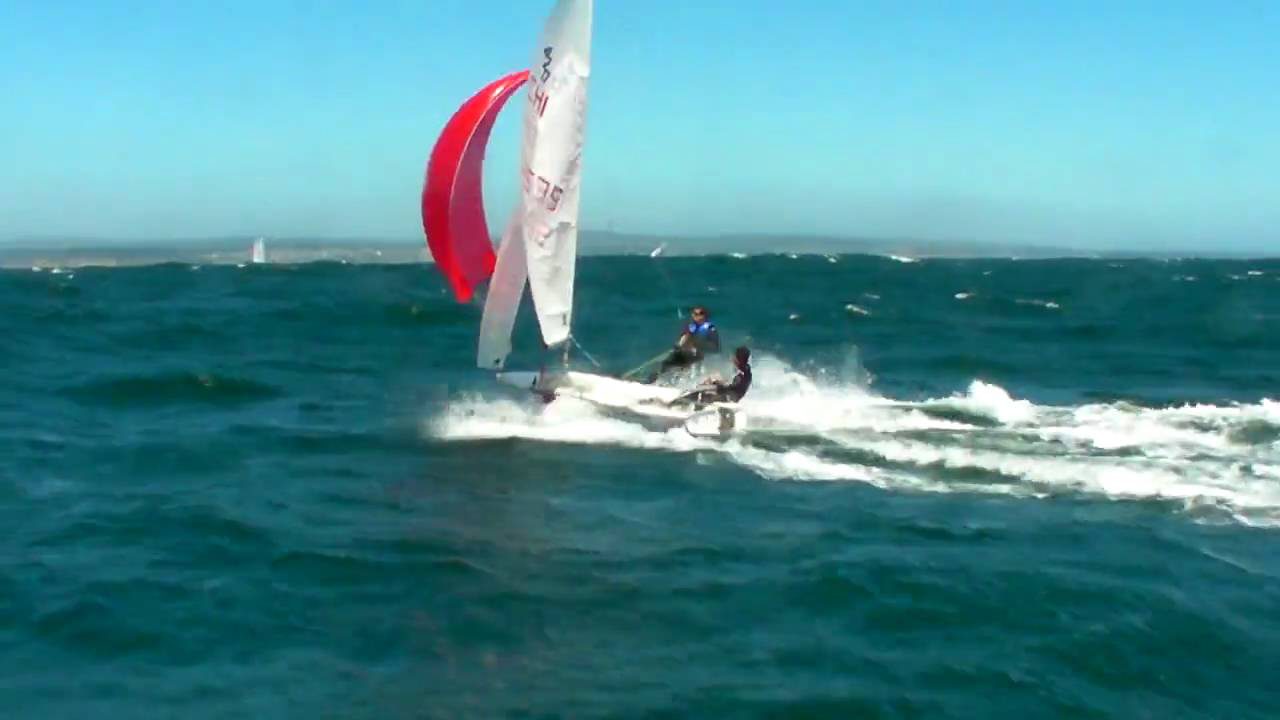

In these days of windward-leeward courses reaching legs provide a bit of variety but how you sail them is no less important and plenty of gains can be made remembering that many competitors treat these legs as a procession and perhaps relax a bit. That’s why we should develop a reaching trim and strategy to gain places on these legs
As you bear away around the mark be mindful of what is going on ahead and around you. Be careful not to get tangled up with other boats, especially those that try to cart you off the course.
The best strategy is to ‘push’ the boats ahead of you by following behind them and not threatening their breeze.
The goal is to get farther ahead of the pack behind than worry about passing them later in the race.
Passing On The Reaching Leg – Reaching Trim and Strategy
If a slow boat is holding you back, try to pass several boat lengths to windward of them, by the time they realize you are about to pass them it is usually difficult or impossible for them to head up.
If possible, go for the pass in a puff and if you can get planing first it will be difficult for them to head up and defend.
On a typical reach, the leading boats extend because the bulk of the following boats sails an arc which takes them above the rhumb line, they not only sail more distance but then have to sail low which is slower leaving them with not many options in the last part of the leg.
Wherever possible sail close to the rhumb line, bearing off in the puffs and heating up in the lulls.
REACHING SETUP – Reaching Trim and Strategy
Ease the jib and for best performance move the lead outboard and forward, keep the halyard firm to hold the draft forward and prevent the back of the sail from becoming too round.
If the lead is not moved as the sheet is eased, then the top of the sail will twist open. This spills power, and the bottom of the sail will hook in toward the boat, creating excess drag.
With the jib trimmed outboard, ease the main, keep the vang tight, and ease the mainsheet or lower the traveller. As the main goes out, heeling forces decrease, and the boat accelerates. As the boom goes out, the vang is critical to control the twist.
When overpowered on a reach, easing the vang will spill power, reduce heel, and balance the helm. Use the telltales to fine-tune trim, the leech telltales should be flowing. If the sail luffs, then trim in.

